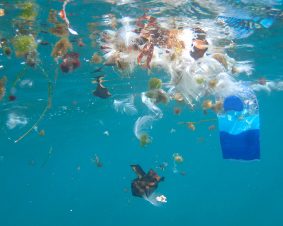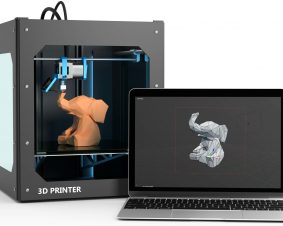 >
Spotlight July 2021: The Path to Digital Material Research – It is never too late to start
>
Spotlight July 2021: The Path to Digital Material Research – It is never too late to start
Machine Learning, Artificial Intelligence, Big Data…. Have you read these words lately? No, these are not just buzzwords. The digitalisation of science is an evolving topic that is gaining importance with each passing day. That is why this month we would like to introduce you to the article “Digital Transformation in Materials Science: A Paradigm Change in Material’s Development” by J. Kimmig, from the Schubert group in Jena, et. al.
This paper explores the current developments in automation and digitalisation in materials science and assesses the challenges in materials preparation and characterisation, as well as data management, data analysis, experiment design and manufacturing. The publication begins with a clarification of common terms from the field of digitalisation and explains the importance of applying FAIR principles in dealing with data from the very beginning. Using examples of digital solutions, effective strategies for achieving digital materials science are presented. The ways in which these strategies enable efficiency and innovation are outlined consistently throughout the paper and provide a clear picture of the benefits in each case.
Although the safety of materials and the associated research is not part of the review, it is fully plausible that the mentioned procedures and consequences are also crucial for safety research, for example: The mentioned concept of storing “negative” data can be directly transferred to safety research.
Original Publication:
Kimmig, J. et al. (2021). Digital Transformation in Materials Science: A Paradigm Change in Material’s Development. Advanced Materials, 33(8), 2004940. DOI: 10.1002/adma.202004940

Weitere Spotlights
Spotlight May 2022: Nano-ghosts” – Risk assessment of submicron-sized particles in food biased towards fictional “nano”
The European Commission has issued a ban on the colorant titanium dioxide in food. Titanium dioxide, which provides a nice shine and bright white color, can potentially damage genetic material. We chose a review article from 2022 for the May 2022 Spotlight that addresses the risk assessment of food-grade titanium dioxide (E171) and the resulting […]
Read moreSpotlight August 2020: The nanoGRAVUR Grouping approach
In August, we would like to present a paper of the German BMBF project nanoGRAVUR. nanoGRAVUR dealt from 2015-2018 with the grouping of nanostructured materials with regard to occupational safety, consumer and environmental protection and risk mitigation. The approach is now described by the project partners in this paper.Due to the variety of synthetic nanomaterials and the numerous modifications (differences in size, shape, chemical composition and surface functionalization), the effort required to investigate effects and behaviour within the framework of regulatory requirements is…
Read moreSpotlight July: Plastic Pollution and the Urgent Need for Comprehensive Action
Plastic pollution has become a significant threat to the oceans, biodiversity, and ecosystems worldwide. Despite efforts to reduce plastic consumption, escalating plastic production continues to increase the magnitude of plastic pollution in the environment. In response to this crisis, the UN-Environmental Assembly (Link) adopted a resolution in March 2022 to develop a legally binding treaty […]
Read moreSpotlight November 2023: Early Awareness and Action System for Advanced Materials (Early4AdMa)
Advanced materials hold immense potential to address global challenges such as environmental degradation, transformation of the energy sector, and development towards circularity. To harness their benefits while ensuring safety and sustainability, regulatory bodies, scientific communities, and industries have recognized the need for proactive approaches. The “Early4AdMa” system is a pre-regulatory risk governance tool for advanced […]
Read more


